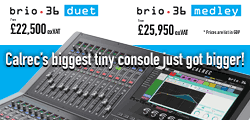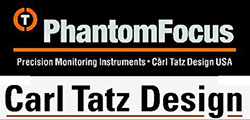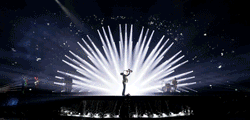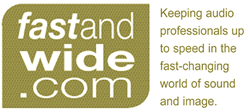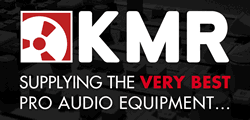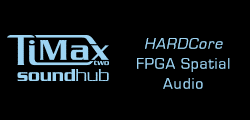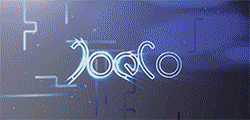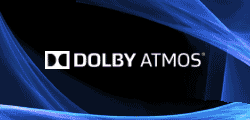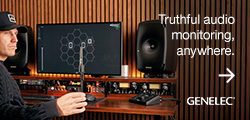![]() Obsessions and collections made a good start to my blogging on Fast-and-Wide. Dipping into the history of the ill-fated Birotron keyboard exposed the joys, absurdities and contradictions that a passion for recording and equipment almost necessarily invites.
Obsessions and collections made a good start to my blogging on Fast-and-Wide. Dipping into the history of the ill-fated Birotron keyboard exposed the joys, absurdities and contradictions that a passion for recording and equipment almost necessarily invites.
But who would build a fantastically successful sound business based on that very same kind of passion, and then not want to celebrate it?
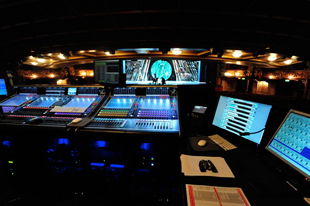 If you could – just for the sake of argument – lay claim to 80 per cent of the music recording market, could you resist the opportunity to brag about it? How about a similar stake in staging live music concerts? Not tempted? Theatre productions then?
If you could – just for the sake of argument – lay claim to 80 per cent of the music recording market, could you resist the opportunity to brag about it? How about a similar stake in staging live music concerts? Not tempted? Theatre productions then?
It’s not through lack of invitations that Autograph Sound Recording has fought shy of the press for 40 years. And its sister company Autograph Sales & Installations has been similarly quiet for 30 years. Nothing much to say? It starts here... with an exclusive Fast-and-Wide invitation backstage at a West End show and a visit to the company’s headquarters in North London.
Sign in, Autograph
Quite apart from being an inescapable presence behind the scenes at almost all of London’s West End theatre productions, Autograph also extends its influence to those on New York’s Broadway. The company can lay legitimate claim to pioneering industry-wide techniques, practices, equipment and standards. On the theatre side, Autograph founder Andrew Bruce shares space with American pioneer Abe Jacob in fathering the entire genre of theatre sound design.
On the installation front, Autograph Sales & Installations has recently fitted out the largest Sikh temple in Europe with a Meyer Sound Mina system and continues to successfully apply theatre design principles to its non-theatrical installation clients.
Plenty to talk about on both fronts. So why do I sense an air of reticence to lay claim to it all?
While Autograph’s theatre work shows the company at its best in terms of both volume and quality, there is a feeling that there is another message trying to come out from North London – one that wants to cast all their sound installations in the same theatrical limelight. Definitely time to talk…

So to the London Palladium, where I have been invited to discuss the company’s history and achievements while the cast of The Wizard of Oz warms up on the stage and the sound crew goes through its daily line check. It’s access all areas – of the show and Autograph’s part in supplying and installing the sound system. Although this particular show was designed by Mick Potter, many aspects of it benefit from the equipment and system engineering that the company has pioneered since the 70s.
Backstage, along with a stash of broomsticks and a pack of Totos, the complexity of the technical production becomes clear – racks of amplifiers and control equipment, radio mic systems and even a video booth to allow the actors on the stage to encounter the wizard from afar. At front of house is a DiGiCo SD7T mixing console. Now commonplace in theatre productions around the world, DiGiCo’s theatre software represents an intense collaboration between the desk’s development team and... yes, Autograph’s Andrew Bruce.
‘It’s been an incredible effort from the DiGiCo design team to come up with a desk that is so flexible and intuitive, this is in no small way a result of drawing on more than 30 years of Andrew’s experience in all aspects of theatre sound design,’ says Autograph Financial Director (also former sound engineer and radio mic specialist) Duncan Bell. ‘The advances that DiGiCo has made into theatre since the D5 Live appeared are truly amazing. They have responded to the rigorous demands of the theatre market quickly, mostly because they have listened to end-users and consulted with us all the way along the line.’
‘We long ago learnt to adopt the philosophy of “if it can go wrong, it will go wrong” – so what are we going to do when it does? Having a spare in the building simply doesn’t cover it. In theatre, there is no forgiveness for failure, stopping the show is not an option. DiGiCo, and many of our other suppliers, have had to tap into our obsession that redundancy has to be built into everything so that we have the ability to provide seamless back-up.’
The implementation of redundant systems is a good example of the way that Autograph’s pioneering role in theatre systems continues to play an active part in every production they are involved in. Autograph regularly supplies switchover systems (for everything from power supplies to sound effects playback) to shows all over the world.
‘The Qlab system is a good example of a “critical” theatre system,’ Bell offers. ‘It runs identically on two Mac Minis which track each other so they are constantly in sync and can be swapped at the push of a button with no break in the audio due to the changeover boxes our service director Tony Robinson designs and builds. It was devised as a result of a need that we identified and now comes up on show technical specs. It’s a little bit of Autograph all over the world… the same attention to detail is the maxim of our Sales & Installations company, where these “clever” boxes are recommended and installed.’
Through Abe Jacob, Autograph was instrumental in bringing Meyer Sound loudspeaker systems to Europe and into theatre applications – and effectively paved the way for the company’s future sales and installation business. Jacob had worked with Meyer Sound on the development of the groundbreaking UPA loudspeaker, which rewrote the rulebook in terms of its size and performance. His wish to use it in Europe led Bruce to form what is now Autograph Sales & Installations, and become the European distributor for Meyer equipment. This was to be followed by the likes of Clear-Com and Micron, as Bruce identified them as ideal choices for theatre use. His mission was to not only supply these systems, but also to provide a service that no-one else had the resources to provide, namely experience and the attention to detail the theatre demands.
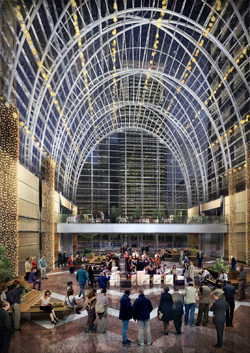 ‘The emphasis was, and remains, to add value to what we use and sell,’ Bell explains. ‘Initially we built an amplifier package to go with the Meyer systems that was able to withstand the rigours of the road, and that became a standard item that was used throughout Europe. In many ways, it was the blueprint for what we have gone on to do, and illustrates the crossover between the two sides of Autograph.’
‘The emphasis was, and remains, to add value to what we use and sell,’ Bell explains. ‘Initially we built an amplifier package to go with the Meyer systems that was able to withstand the rigours of the road, and that became a standard item that was used throughout Europe. In many ways, it was the blueprint for what we have gone on to do, and illustrates the crossover between the two sides of Autograph.’
‘We treat all clients the same, regardless of scale or budget,’ says Bell. ‘We wouldn’t sell or use anything that we wouldn’t spec in a theatre situation. But people often don’t tend to associate the Autograph name with sales and installations.’
That’s an oversight – read missed opportunity – for a wide range of people looking to get the best results from a finite budget but assuming that a company with such clout is beyond their means. In fact, it matters little if a project is on a Broadway scale or a Nativity play performed by eight-year-olds – anyone can set up some equipment but it is essential in every case to understand the needs and expectations, and manage both equipment and budget to maximum effect.
Autograph is adamant that a small budget is capable of securing its expertise: ‘We can do what we do for a West End production for anyone, regardless of scale,’ Bell confirms. ‘We believe we know the equipment, the infrastructure and the solutions needed to get the best results, so we are able to help our clients make more informed decisions.’
You have to agree that it would be difficult to amass as much expertise as Autograph. And it would be foolish to employ an expert and then claim to know better – wouldn’t it?
The establishment and evolution of Autograph’s various departments reflects that of the pro audio industry as a whole, and plays to the company’s collective strengths. ‘We are able to take their knowledge of equipment and its application and apply it to projects of any scale,’ Bell reiterates. ‘It’s a kind of experience overhead that pays benefits rather than costs cash’.
‘The possible downside of that is that people sometimes think that they can’t approach us because we’re too big or expensive,’ he adds.
Certainly, there will be cheaper options than Autograph at every level… ‘But if you don’t get the right equipment and service, then it’s a false economy,’ Bell continues. ‘We have the core expertise and it doesn’t cost any more to make use of it. Anyone can sell equipment; but we believe we can provide more than that’.
There is a clear mutual benefit between theatre and installation work here: ‘We can take our work in theatre and rentals and apply it to other areas,’ Bell offers. ‘We can apply it to a provincial theatre, church or a school, and give the kind of attention to detail we give a West End show. They think in terms of being a church or a school, but in reality they are both putting on shows. It’s been that way in America for some time and it’s growing here quickly.’
Behind the curtainLike Oz’s wizard, most of theatre’s magic is performed behind the scenes. For example, the sound for The Wizard of Oz is deliberately discreet. The use of 104 delay and surround speakers throughout the auditorium, additional to the main PA is an example of what can be done by clever design and a discreet installation. The cleverness is in the way that the audience will hear every nuance of the show without being aware of the how and where.
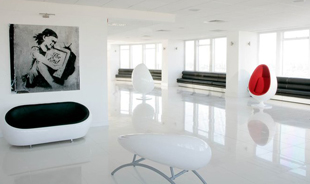 ‘Theatres are more intimate and more time is taken over the sound than at a rock concert,’ Bell says. ‘Theatre has moved from being a story that is interspersed with song to the story being told through song, and that makes intelligibility very important. That’s not the case with a music concert but it’s a very important consideration in the system design and equipment choices in a theatre.
‘Theatres are more intimate and more time is taken over the sound than at a rock concert,’ Bell says. ‘Theatre has moved from being a story that is interspersed with song to the story being told through song, and that makes intelligibility very important. That’s not the case with a music concert but it’s a very important consideration in the system design and equipment choices in a theatre.
‘Designers are also able to time align the sound to move with the performers to make what you hear fit with what you see.
‘Shows are louder and audiences and producers have become more accepting of seeing some of the system,’ he adds, with the unspoken relief of no longer having to hide large FOH loudspeaker systems. ‘But I personally don’t like to see performers’ head mics – it spoils the illusion, and they can easily be hidden in hair without compromising their pick-up.’
The use of TV talent shows to find cast members is also changing the profile of theatre audiences – and adding to the list of expectations that must be met. In turn, this brings new techniques and experience to the Autograph stable, and to its installation clients…
While both sides of the Autograph operation wish to be seen as operating as different companies, the in-house crossover of resources of all kinds is clearly to the benefit of both. And, as Bell points out, a lot of companies’ culture changes as the staff changes – clearly, this is not the case with Autograph.
‘If you want to see what sums Autograph up, it’s in here,’ Bell says, as we wind up an extensive tour of the company’s technical resources. He opens the door to an unremarkable room – no client entertainment goes on here. Instead, shelves of apparently unrelated pieces of equipment line the walls. ‘It’s sometimes, not often, put to the test, but there is one of everything we have on current Autograph shows in the West End, configured and ready to go if we ever get a failure.’
There’s a lot of kit here. And a huge amount of investment. All in case the unforeseen happens.
But it’s a fair reflection of the Autograph ethos. Alongside being the only theatre production company to have a permanent team of in-house sound designers, the London HQ houses a recording facility for authoring theatre sound effects – no broom cupboard affair, this is a full-fledged studio designed by White Mark that would make an attractive commercial facility if it were not reserved almost exclusively for Autograph’s own recording requirements.
The responsibility taken for the design, provision, performance and maintenance of a theatre production is also mirrored in Autograph’s installation work. ‘As a rental company, we own the equipment and are responsible for its upkeep,’ Bell points out. ‘That gives us an ongoing relationship with our clients, and we like to have a comparable relationship with our installation customers so that we can be sure that a system continues to work well and serves their needs down the line. Part of the support contract on offer is the provision of temporary equipment in the event of any problems. Some installations run 24-7, and this bridges the gap between a manufacturer’s warranty and maintaining a functioning system. It also represents a long-term investment for Autograph and our clients that allows us to continue to add to our experience and expertise.’
So, all of this adds up to a package that is not just unusual, but unique. And so are the needs of the market that Autograph Sales & Installations is targeting – large or small. Whether it is a high-profile West End show, a sophisticated public performance space or a small school hall, there is some real magic in Autograph’s Oz.




